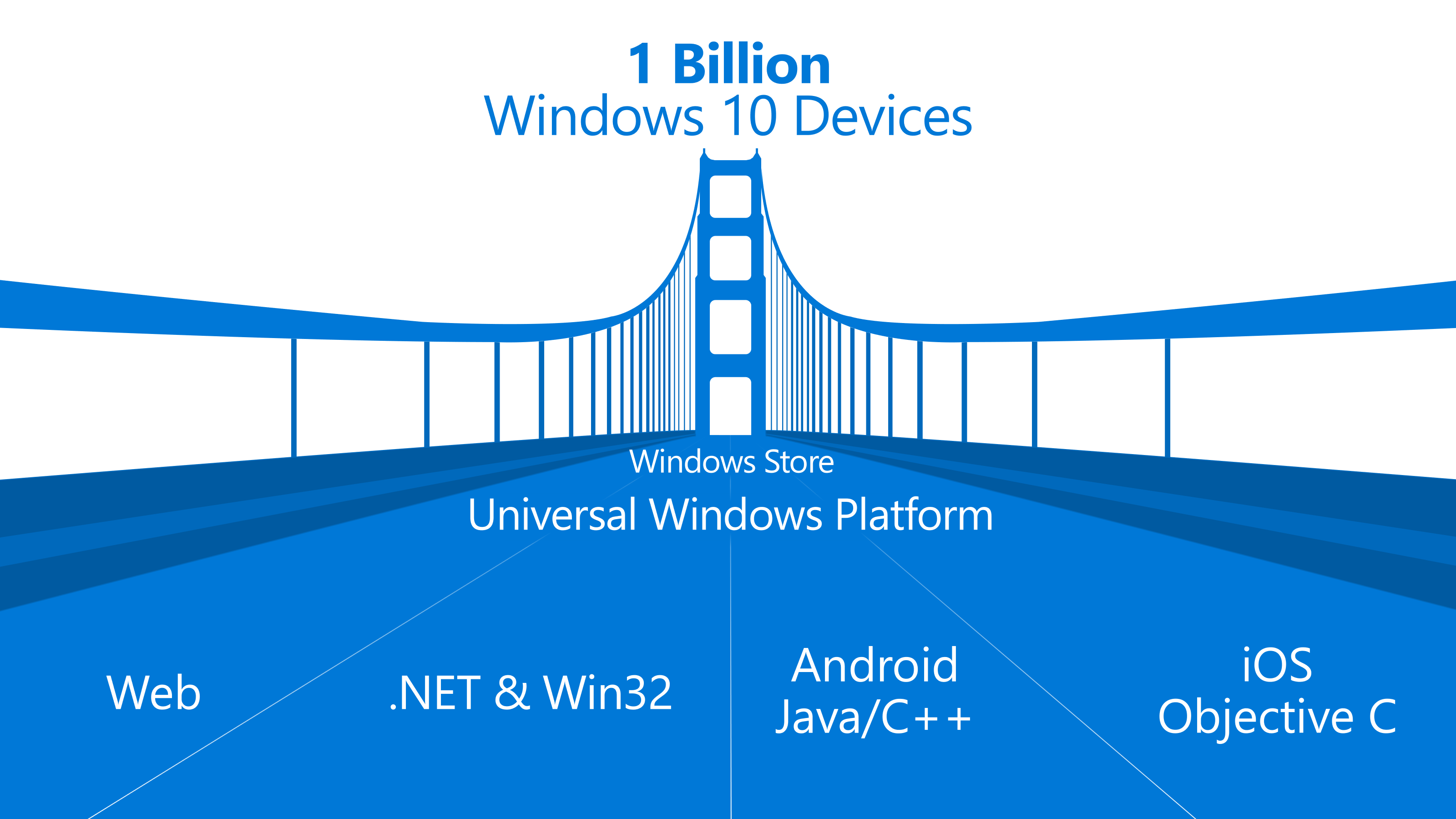Microsoft today released Windows Bridge for iOS (previously called Project Islandwood) as an open-source project under the MIT license. The tool isn’t ready for formal launch just yet — that is still slated for later this fall — but Microsoft wants “more eyes, feedback, and participation on the code,” so the company is making it available now on GitHub.
At its Build 2015 developer conference in April, Microsoft unveiled four new Windows Store app types: Web, desktop, Android, and iOS. The pitch was simple: Developers will be able to reuse their web code, Windows desktop applications (.NET code), Android apps (Java and C++), and iOS apps (Objective C) to build universal apps that work across all types of Windows devices.
Currently, Windows Bridge for iOS supports Windows 8.1 and Windows 10 apps built for x86 and x64 processor architectures. Microsoft plans to soon add compiler optimizations and support for ARM, meaning mobile apps.
Microsoft is promising to do the rest of its Windows Bridge for iOS development “in the open.” The project’s goal is to make it easy for iOS developers to build and run apps on Windows, but Microsoft warns that today’s release is still very much a work-in-progress. Nonetheless, Microsoft hopes iOS app developers will take a look, compare the tool to what their apps require, and maybe even contribute directly to the project (with source code, tests, bug reports, and comments).
“Our goal with the iOS bridge has never been simply to run iOS apps on Windows,” Salmaan Ahmed, the Windows Bridge for iOS program manager, explained. “Rather, our goal is to help you write great Windows apps that use as much of your existing code and knowledge as possible. We will, of course, continue to work to expand our iOS compatibility, but it’s important to note that there is much more you can do with the bridge.”
Ahmed also outlined the three core principles that drove the architecture and design of the iOS bridge:
- Full Windows API access: Making it easy to use Windows APIs within Objective-C code
- iOS compatibility: Empower developers to reuse as much existing iOS code as reasonably possible
- No sandboxing: iOS and Windows APIs should be able to work together
For more detailed information, you’ll want to check out Ahmed’s post, Windows Bridge for iOS: Let’s open this up.
As for the other three bridges, Microsoft today shared some updates:
- The Windows Bridge for web apps (Project Westminster) has been available for a while now. You can learn more about what happens at the Windows level, how the bridge functions, how you can use it to build Hosted Web Apps, and so on over here: Project Westminster in a nutshell.
- The Windows Bridge for Android (Project Astoria) is still only available as a technical preview by invitation. Microsoft has been gradually inviting more developers each week and is aiming to have everyone currently on the early access waitlist in the program by the end of August. The Windows Bridge for Android will be made available as a public beta in the fall.
- The Windows Bridge for Classic Windows apps (Project Centennial) will be ready for public testing next year. Microsoft doesn’t currently have a preview program or more details to share there.
Microsoft is still aiming to for 1 billion Windows 10 devices in two to three years. That’s a great pitch to developers, but it also needs to woo them with the right tools: In addition to Windows 10 apps built from the ground up, the company wants Android, iOS, web, and existing Windows applications in its Windows Store as well.
VentureBeat's mission is to be a digital town square for technical decision-makers to gain knowledge about transformative enterprise technology and transact. Learn More


